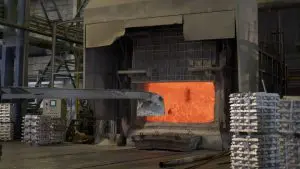When you are planning to design a product that has Aluminium as one of its material components, you will undoubtedly consider what’s best in terms of manufacturing processes for this particular metal. Even though various methods exist when it comes to the forming of Aluminium, die casting is usually one of the top options to choose.
A standard manufacturing process used by many industries working with metals, precision die casting involves the injection of molten metal into a die cavity under high pressure. While die casting can be done with many types of metals, Aluminium is still one of the most common materials used, hence making the pairing of the die casting process and the use of Aluminium a perfect one.
Table of Contents
The Die Casting Process Explained
As mentioned earlier, Aluminium die casting is a process that helps create complex parts that are widely used in many industries. Some examples include the likes of automotive, industrial, as well as telecommunications products. In terms of the die cast process, first and foremost, Aluminium ingots are heated to the point that they become molten in state. The liquefied Aluminium is then pressure injected into a die cavity. Upon solidification, the die that is made up of two halves is then unclamped and separated to reveal the Aluminium part that has been cast into the specified shape and size.
Such is the precision of the manufacturing process, the end product is one formed with a smooth surface and requires little machining. In addition, as the die is made of steel, this die casting process is repeated multiple times with the same mold being utilised till it deteriorates. This makes Aluminium die casting a process that is capable of high-volume production.
Advantages of Aluminium Die Casting
In terms of advantages, Aluminium as a material offers the following:
- It is customisable: There’s a wide variety of finishing options, thus a product’s appearance can be customised.
- It has excellent material properties: As a metal, Aluminium is soft and malleable. It is also a metal that is able to endure high operating temperatures and is corrosion resistant.
- It is light in weight: Due to its composition, Aluminium can be used to create lighter parts and components without having to sacrifice durability.
- It is simple to work on: As a material, Aluminium is easy to cast, and this allows one to create a wide range of products.
Selection of the Right Aluminium Grade
Not all Aluminium variants are the same. The various types of Aluminium alloys available will present significant differences in terms of characteristics, some of which include fatigue tolerance, density, melting point, and more. Here are two of the more common Aluminium die casting materials used:
A380: This Aluminium alloy type offers excellent thermal properties, fluidity, and pressure tightness.
A383: This Aluminium alloy type is preferred by some manufacturers as an alternative to the A380 due to its enhanced corrosion resistance properties, is easy to cast, and has enhanced dimensional stability.
*Do note that the choice of Aluminium alloy is still dependent on your project’s requirements.
Further Considerations
Here are additional factors that need to be considered to maximise the Aluminium die casting product design and manufacturing processes. They are as follows:
Machining Allowance
Machining allowance refers to the amount of stock that material manufacturers can remove from a completed die cast part. If the amount is small, it might not meet the project’s requirements. An essential consideration during the Aluminium die casting process is to ensure optimum mechanical properties and density near the casting’s surface.
Wall Thickness
In most Aluminium die casting projects, uniform wall thickness is necessary. If the final product requires a varying degree of thickness, adjust the process gradually. Thinner walls can help reduce material costs and make the workpiece lighter. Apart from achieving the desired thickness, it is crucial to ensure consistency throughout the component.
Assembly Process
Assembling complex workpieces involves the implementation of techniques, such as welding, threading, or fastening. Complicated assemblies will require many steps before the procedure is complete. Thus, it is necessary to identify the correct processes during the planning phase, as it will determine the product’s overall design.
Shrinkage of Material
It’s important to account for shrinkage in Aluminium die casting. During the cooling and solidification process, metal will shrink. To minimise this effect, an Aluminium die casting product design consisting of thinner sections can be created. Do note that thicker areas on the workpiece are more likely to shrink and result in surface porosity.
Choose EKO for Your Aluminium Die Casting Needs
Looking for a top die casting manufacturer to assist in producing aluminium die cast parts? With more than 20 years of Aluminium die casting expertise, EKO Industries has partnered with a diverse range of companies, some of which include those from the Network & Telecommunications, Medical, Oil & Gas, Automotive, and Industrial Parts industries. Speak to us today to find out more about our Aluminium die casting design process and how it can benefit your business.



